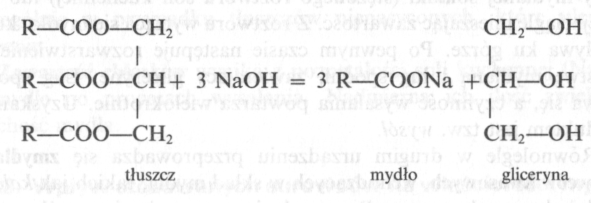 Other detergent ingredients
Other detergent ingredients
One of the components of the laundry detergent composition is optical brightener. The phenomenon of fluorescence is used in the currently used optical brighteners. These substances absorb invisible ultraviolet radiation, contained in solar radiation, and they themselves emit visible blue and violet radiation. These rays eliminate the yellow shade of textiles, causing them, that these products look snow-white in the daylight. Optical brightener penetrates the fabric, without chemically acting on it and without damaging it. The oldest bleaching agent used is a linen dye, called blue ultramarine. Its action is not accompanied by the phenomenon of fluorescence, on the other hand, it slightly dyes the linen blue, which compensates for yellow and red (in the case of light tints in these shades, it gives the impression of a gray color).
An important additive used in detergent washing powders is carboxymethyl cellulose (CMC). This compound effectively prevents dirt from re-depositing on the fabric, it does not, however, improve the washing performance of the detergent.
Many substances are used in the compositions of washing agents, which are treated as ennobling additives. Such additives include phosphonates, which are used in small amounts. They have the ability to form complex compounds with heavy metals, thus preventing the decomposition of chemical bleaches, thus they have a stabilizing effect on the detergent. Additionally, they prevent the crystallization of calcium carbonate and other compounds, contribute to better dispersion of dirt in the washing bath, prevent corrosion of steel and aluminum. An important property of phosphonates is their direct influence on the removal of oxidizable substances (oxidizable) dirt, so you can quite effectively remove dirt, np. with tea or wine, at low temperatures, without the use of chemical bleaches. Due to these properties, phosphonates have become components of low-phosphate liquid washing agents, especially detergents for delicate fabrics and industrial detergents and cleaning agents.
Dye transfer is an important problem in washing processes, from colored parts of fabrics, for washing bath, and then re-deposition on white parts of fabrics. In order to prevent this phenomenon, the so-called. dye transfer inhibitors. The inhibitor binds the dye molecules, which have passed into the washing bath and does not allow them to re-settle on the washed fabrics.
Among the many ingredients of washing agents, there are also substances that have a stabilizing effect (soda in metacrzemia, magnesium silicate), regulating the pH (sodium carbonate), fillers (sodium sulfate) and fragrances, and moreover, foam-extinguishing substances (reducing the amount of foam), viscosity regulators and others. All these ingredients play an important role, deciding on the quality of the washing agent. The purpose of the filler is to reduce the bulk weight of the washing powder. The bulk density is the mass per unit volume of a free-flowing powder. The lower the bulk density is, the volume of the powder is greater. This situation is beneficial for the consumer, as it is then easier to dose the powder, avoiding its excess in the washing bath.
Due to savings and minimization of environmental burden with additional substances, introduced in recent years, the so-called. super concentrated washing powders. They are characterized by this, that the use of sodium sulfate in them was discontinued, as a filler, and have a higher bulk density.